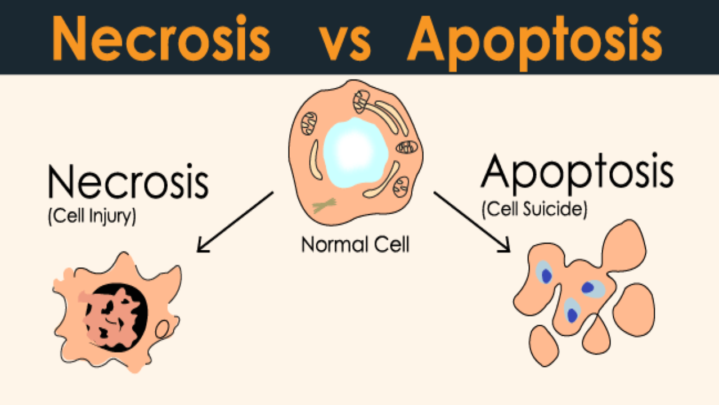The two mechanisms which are a part of cell death in multicellular organisms are the necrosis and apoptosis. Necrosis is a pathological process which are the results of external agents such as trauma, toxins and infections whereas apoptosis is a naturally occuring physiological process.
Following are the differences between necrosis and apoptosis.
1. Definition
Necrosis is a premature cell death whereas apoptosis is a programmed cell death.
2. Process
Swelling of cytoplasm and mitochondria which is followed by cell lysis is necrosis and shrinking of cytoplasm which leads to condensation of nucleus is apoptosis.
3. Organelles
With swelling, the organelles disintegrate in necrosis and the organelles in the necrotic cells stop functioning after the death of the cell.
While in apoptosis, the pores formations make the mitochondria leaky and the organelles in apoptotic cells continue to function even after cell death.
4. Regulation
Necrosis is an unregulated process while apoptosis, due to its activation of the pathway by enzymes, is tightly regulated.
5. Vesicle formation
During necrosis no vesicles are formed but there is a cell lysis which releases the cell contents into extracellular fluids. However, in apoptosis, membrane bound vesicles are formed by the apoptosis. They fragment the cells into small bodies.
6. Caspase
The caspase independent pathway is necrosis and the dependent caspase pathway is apoptosis.
7. Functions
Necrosis functions in inducing the immune system and defends the body from pathogens. The apoptosis works in controlling the cell number in the body of multicellular organisms.
Keep reading SuccessYeti.com





